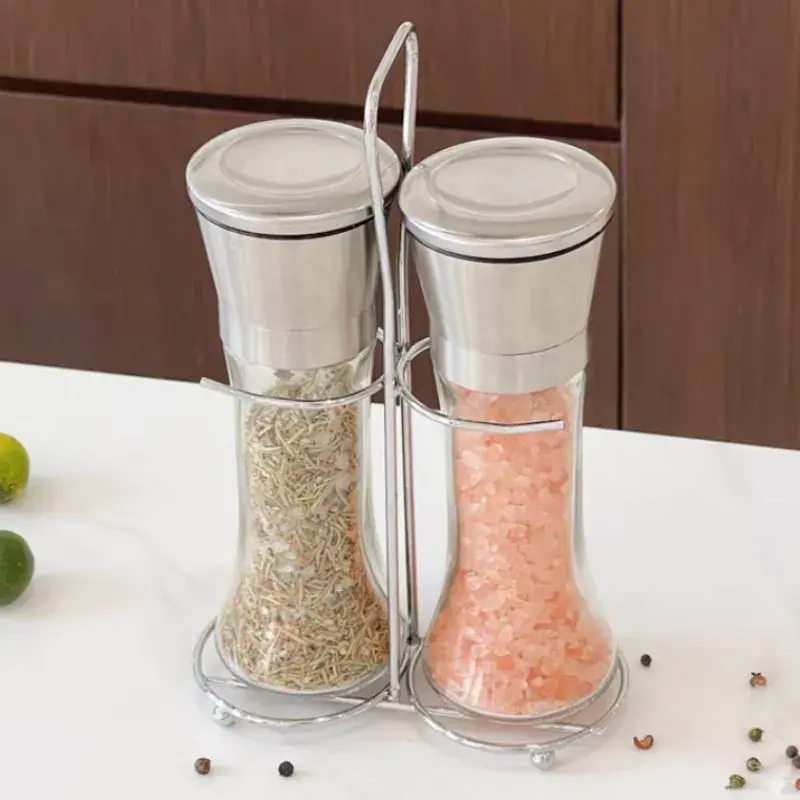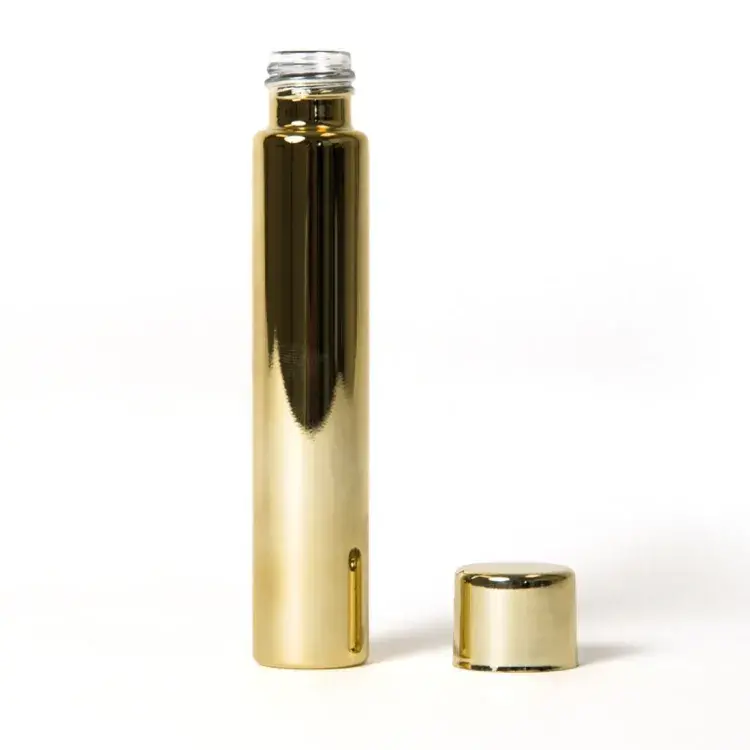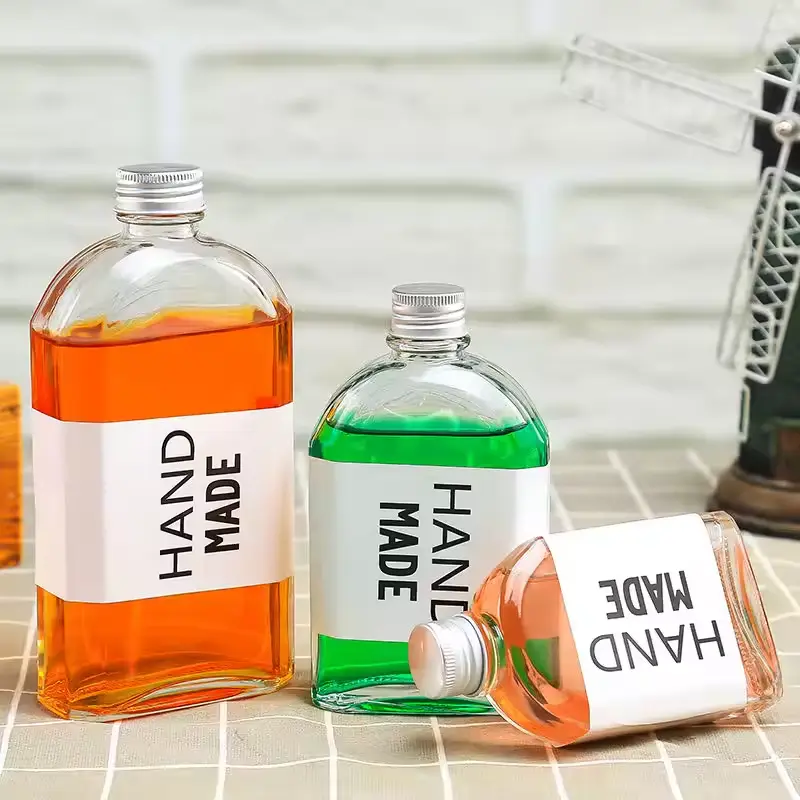In a world increasingly focused on environmental responsibility, the choices we make about packaging matter more than ever. For business owners and procurement managers, selecting the right material is a complex decision that balances quality, cost, and brand image. This article cuts through the noise to celebrate glass as a premier sustainable packaging solution. We will explore the remarkable journey of glass from natural elements to a premium container and back again, demonstrating why it stands as a pillar of the circular economy. If you're looking to align your brand with genuine sustainability and make a packaging choice that protects both your product and the planet, you'll find the answers here.
What Makes Glass Packaging a Truly Sustainable Choice?
The journey of glass packaging begins with nature itself. Unlike synthetic materials that rely on fossil fuels, glass is made from abundant, naturally occurring raw materials: sand (silica), soda ash, and limestone. This fundamental difference sets it apart as an inherently sustainable option. There's a certain purity to it. When you hold a high-quality glass jar, you're holding a piece of the earth, transformed by heat into a stable, inert, and beautiful container. This connection to natural resources is the first step in its impressive lifecycle.
From my perspective as a factory owner with seven production lines, I see this process firsthand. We are not creating something artificial; we are simply melting and reshaping these natural ingredients. This process is thousands of years old, yet it fits perfectly into modern sustainability goals. The integrity of glass means it doesn't need additional chemical layers or plastic liners to protect the contents. This purity ensures that from its creation to its eventual reuse or recycling, glass remains a clean and environmentally friendly material. It’s a simple, elegant solution for brands that want to minimise their environmental footprint from the very start of their product’s life.
Is Glass Infinitely Recyclable? The Magic of a Circular Material.
Yes, it is! This is perhaps the most powerful argument for glass. Glass is 100% recyclable and can be recycled endlessly without any loss in quality or purity. This concept of being infinitely recyclable is the cornerstone of a true circular economy. Think about it: a glass bottle used for a beverage today can be melted down and reformed into a new glass bottle for skincare tomorrow, and that cycle can repeat forever. It’s a perfect loop. This process dramatically reduces the need for virgin materials, preserving our planet's finite resources.
This infinite loop stands in stark contrast to other materials. Plastic, for example, is often "downcycled," meaning it's recycled into a lower-quality product until it eventually becomes unrecyclable waste. Glass, however, maintains its integrity. This property allows us to create a self-sustaining supply chain for glass packaging. The more we recycle, the less we have to extract, which is a powerful way to reduce environmental impact. The magic isn't just in the material itself, but in the system we can build around it—a system designed to eliminate waste entirely.

How Does Recycling Glass Actually Reduce Waste and Save Natural Resources?
The process of glass recycling is a model of efficiency that directly translates into environmental savings. When you recycle glass, it is collected, sorted by color, cleaned, and then crushed into a furnace-ready material called cullet. This cullet is then mixed with a smaller amount of raw materials to produce new glass containers. This simple act has a massive positive impact. For every ton of glass recycled, we save more than a ton of natural resources, including 1,300 pounds of sand, 410 pounds of soda ash, and 380 pounds of limestone.
The benefits extend beyond just saving raw material. The glass production process is energy-intensive because of the high temperatures needed to melt sand. However, cullet melts at a significantly lower temperature than virgin materials. This means that using recycled glass content requires substantially less energy. According to the Glass Packaging Institute, for every 10% of cullet used in the manufacturing process, energy costs drop by 2-3%. This reduction in energy consumption directly leads to lower carbon emissions from the furnace, helping to combat climate change. By choosing glass, you're not just choosing a recyclable packaging; you're actively participating in a system designed to save energy and reduce waste.
Why Should We Praise Glass Over Other Packaging Materials Like Plastic?
It’s important to give praise where it's due, and glass earns it by outperforming other materials on several key fronts, especially plastic. The most significant difference is product integrity and safety. Glass is non-porous and impermeable, meaning there are no interactions between the packaging and the product inside. It won't leach chemicals into food products, pharmaceuticals, or cosmetics, ensuring the purity, aroma, and flavor of the contents remain exactly as intended. This is a critical concern for my clients in the cannabis and pharmaceutical industries, where product integrity is non-negotiable.
Beyond safety, there’s the issue of environmental persistence. A plastic bottle can take 450 years or more to decompose, breaking down into harmful microplastics that pollute our oceans and soil. A glass container, made from natural elements, is far less harmful if it does end up in the environment. Furthermore, the recycling narrative is clearer and more effective for glass. While only about 9% of plastic has ever been recycled, the U.S. EPA reports that approximately 31% of glass containers are recycled. This superior rate, combined with its infinite recyclability, makes glass a much more reliable sustainable choice for any eco-conscious brand. When you're comparing glass jars and plastic jars, the long-term benefits of glass become undeniably clear.
What is the Role of "Cullet" in Sustainable Glass Production?
Cullet is the industry term for crushed, recycled glass, and it is the unsung hero of sustainable glass manufacturing. It is the lifeblood of the circular model. When we introduce cullet into our production lines, we are essentially giving old packaging a new life. This isn't just an environmental nicety; it’s a core component of modern, efficient glassmaking. Using cullet dramatically improves the entire process. As mentioned, it lowers the melting temperature, which reduces the energy needed and cuts down on greenhouse gas emissions.
From a production standpoint, cullet also helps the raw material mixture melt more evenly, leading to a more consistent and higher-quality final glass product. This is something that a procurement officer like Mark Thompson would appreciate—it’s a direct link between a sustainable practice and a high-quality outcome. The more we, as an industry and as consumers, commit to clean recycling streams, the more cullet becomes available. This creates a positive feedback loop: better recycling leads to more efficient manufacturing, which produces more recyclable containers, strengthening the entire system. It's a testament to how a simple act can have profound effects on industrial efficiency and sustainability.

Are All Glass Containers Created Equal? A Look at Quality and Safety.
Absolutely not. As someone who oversees the production of millions of glass units, I can attest that there is a vast difference in quality across the market. This is a key concern for buyers like Mark, and for good reason. High-quality glass containers are defined by their consistency in wall thickness, clarity, and strength. They are free from defects like bubbles or stress points that could compromise their durability. For specialized markets, such as cannabis or pharmaceuticals, this goes even further. Features like child-resistant closures are not just a feature; they are a legal and ethical requirement, backed by rigorous testing and certifications like those compliant with 16 CFR § 1700.20.
Ensuring this level of quality requires a manufacturer with robust quality control protocols. At my facility, every batch undergoes multiple inspections, from the initial mix of materials to the final formed container. We ensure compliance with international standards, like FDA regulations for food-contact surfaces. Unfortunately, some suppliers engage in certificate fraud, a serious pain point for importers. A trustworthy partner will provide transparent, verifiable documentation for all safety and compliance claims. This is why it’s so important to vet suppliers thoroughly. The quality of your packaging is a direct reflection of your brand, and it's a critical component of consumer safety and trust. When you source high-quality glass, you're investing in peace of mind.
How Can Choosing the Right Glass Manufacturer Impact Your Sustainability Goals?
Your choice of supplier is just as important as your choice of packaging material. A manufacturer's practices can either bolster or undermine your brand’s sustainability efforts. A truly sustainable partner is one who is invested in the circular economy beyond just making a recyclable product. For instance, do they actively use a high percentage of cullet in their production? Do they have initiatives to reduce water usage and energy consumption in their factory? These are the questions that separate a simple vendor from a true partner.
Furthermore, a reliable partner addresses the operational pain points that can derail a business. In my conversations with clients from the USA and Europe, I hear stories of inefficient communication and costly shipment delays. A good manufacturer acts as an extension of your team, providing clear communication and reliable logistics to ensure your products arrive on time. They are transparent about their processes and certifications, building trust and eliminating the fear of fraud. Finding a partner who understands your needs—from quality inspection to payment methods—is crucial. A strong, transparent relationship with your supplier is the foundation of a resilient and genuinely sustainable supply chain. For those new to sourcing, it's wise to consult a detailed guide to buying glass jars wholesale to understand the key factors in choosing the right partner.
Beyond Recycling: What Are Other Sustainable Aspects of Glass Packaging?
While its infinite recyclability is a headline feature, the sustainability of glass doesn't stop there. One of its most powerful attributes is its potential for reuse. A well-made glass jar or bottle can be washed and used dozens of times by the end consumer for storing other goods, from spices in the kitchen to odds and ends in the garage. This culture of reuse extends the life of the packaging long before it even needs to be recycled, which embodies a core principle of waste reduction: "Reduce, Reuse, Recycle." Brands can even encourage this by designing refillable models for their products.
Another key aspect is its premium feel and protective nature. Glass signals quality. A heavy, clear jar feels more substantial and luxurious than a flimsy plastic container. This perception encourages consumers to keep the packaging rather than discard it, fostering a sense of minimalism and value. Companies like Ardagh Group have often highlighted how this premium quality contributes to brand loyalty. Products housed in glass, whether it's a fine cosmetic cream or artisanal jam, are perceived as being better preserved and of higher value. This durability and the alternative uses it inspires make glass a champion of longevity, a often-overlooked but vital component of a greener lifestyle.

What's the Difference Between Recyclable, Biodegradable, and Compostable Packaging?
In the world of eco-friendly packaging, these terms are often used interchangeably, but they mean very different things. Understanding the distinction is vital for making informed choices. It's a topic I often clarify for my customers to help them communicate their brand's efforts accurately.
- Recyclable Packaging: This means the material can be collected and reprocessed into a new product. Glass is the prime example of a material that can be infinitely recycled into the same product without degradation.
- Biodegradable Packaging: This refers to a material that can be broken down by bacteria or other living organisms over time. However, the term "biodegradable" is broad. It doesn't specify the time it takes to break down or the conditions required. Many biodegradable plastics break down into smaller pieces of plastic, not organic matter, and can leave behind toxic residue.
- Compostable Packaging: This is a much more specific and regulated term. Compostable packaging must be able to break down into natural elements (carbon dioxide, water, inorganic compounds) in a composting environment within a specific timeframe (e.g., 90 days in an industrial facility). These are typically plant-based materials. While a great option, they require specific disposal in commercial composting facilities, which are not yet widely available to all consumers.
For many applications, especially those requiring a strong barrier and long shelf life, the proven, closed-loop system of glass packaging offers a more universally accessible and effective path to reducing our collective carbon footprint.
How Can Your Business Celebrate Sustainability with Glass Packaging?
Adopting sustainable glass packaging is a powerful story your brand can tell. It’s a tangible symbol of your commitment to quality, safety, and the environment. The first step is to celebrate this choice openly. Use your website, social media, and product labels to educate your customers about why you chose glass. Explain its benefits—how it's infinitely recyclable, made from natural materials, and protects the integrity of the product they love. This transparency builds trust and resonates with the growing number of eco-conscious consumers.
You can also design your packaging to encourage reuse. A beautifully designed jar is more likely to be kept and repurposed. Consider adding a small note on the label suggesting alternative uses. Furthermore, partnering with a reliable manufacturer who shares your values allows you to tell a deeper story about a responsible supply chain. You can speak confidently about the high recycled glass content in your containers or your supplier's energy-saving initiatives. By making sustainable glass packaging a core part of your brand identity, you don't just sell a product; you invite your customers to join you and contribute to a more sustainable future. This is more than a packaging decision; it's a statement of your brand's values. For brands looking to make this switch, exploring various eco-friendly glass packaging options is an excellent starting point.
Key Takeaways to Remember
- Natural and Pure: Glass is made from abundant, natural materials like sand, soda ash, and limestone, making it an inherently sustainable choice that won't leach chemicals into your product.
- Infinitely Recyclable: Glass can be recycled endlessly with no loss of quality, forming a perfect circular loop that saves energy and natural resources.
- Energy Saver: Using crushed recycled glass (cullet) in production melts at a lower temperature, which significantly reduces energy consumption and emission levels.
- Quality and Safety Matter: Not all glass is the same. Partner with a reputable manufacturer that provides high-quality, durable containers and can verify compliance with safety standards, such as those for child-resistant packaging for the cannabis industry.
- More Than Just Recyclable: Glass is also highly reusable and often refillable, extending its life long before it enters the recycling stream and promoting a culture of reducing waste.
- Tell Your Story: Choosing glass is a powerful marketing tool. Celebrate your decision and educate your customers on the benefits to build a stronger, more eco-conscious brand identity.
Post time: 07-02-2025







